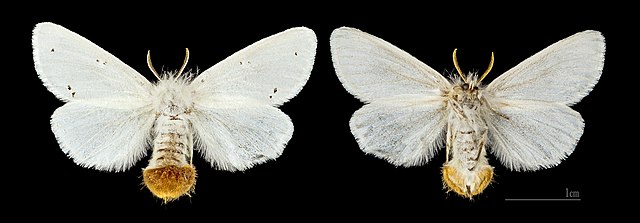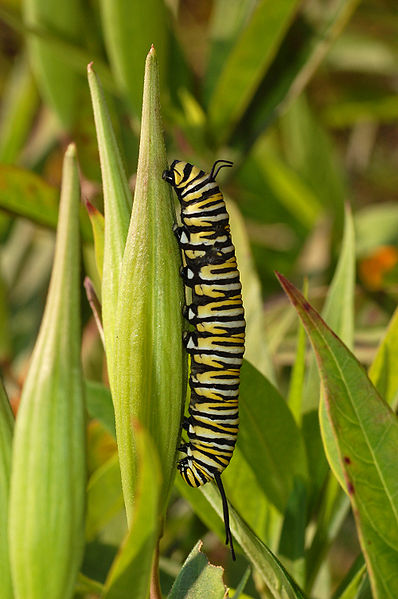The brown-tail moth is a moth of the family Erebidae. It is native to Europe, neighboring countries in Asia, and the north coast of Africa. Descriptions of outbreaks, i.e., large population increases of several years duration, have been reported as far back as the 1500s. The life cycle of the moth is atypical, in that it spends approximately nine months as larvae (caterpillars), leaving about one month each for pupae, imagos and eggs. Larvae (caterpillars) are covered in hairs. Two red spots on the back, toward the tail, distinguish these species from other similarly hairy moth larvae. The winged adults have white wings and a hairy white body with a tuft of brown hair at the tip of the abdomen. Females lay one egg cluster, usually on the underside of a leaf of a host plant. The species is polyphagous, meaning that it feeds on many different species of trees, including pear, apple, maple and oak.
Image: Euproctis chrysorrhoea 1
Image: Euproctis chrysorrhoea (Linnaeus, 1758)
Caterpillar, dorsal view, showing two red dots near tail
Female
Caterpillars are the larval stage of members of the order Lepidoptera.
Euthalia aconthea (baron butterfly) caterpillar found in India
Caterpillar of Papilio machaon
A monarch butterfly (Danaus plexippus) caterpillar feeding on an unopened seed pod of swamp milkweed
Caterpillar cocoon on a pine tree branch.








